There can be your advertisement
300x150
Most Common Mistakes in Repairing Khrushchyovka and How to Fix Them Yourself
What surprises might await in a Khrushchyovka and how to turn problems into unique features
Repair in a Khrushchyovka is always full of surprises. Sometimes yellow spots appear through new wallpapers, sometimes chairs wear away the coating, and sometimes walls are so crooked that laminate lies in waves. Real estate agent Roman Mynzheraru encountered all typical problems of old buildings but found budget-friendly ways to solve them. Moreover, many of these "mistakes" turned into stylish design solutions. Let's explore what surprises await in a Khrushchyovka and how to turn problems into unique interior features.
Main points from the article:
- Problems of old buildings are predictable — you can prepare for them in advance;
- Most defects can be fixed without expensive repairs;
- Creative approach turns flaws into stylish design solutions;
- Proper sequence of work prevents many problems;
- Prevention is cheaper than treatment — some mistakes are better to avoid from the start.
Photo before repair: Mistake #1: Yellow spots on fresh wallpapers
Problem: After pasting new wallpapers in the corridor, yellow spots of unknown origin appeared. This is a classic story for Khrushchyovkas — old stains from leaks, nicotine, rust appear through new coating.
Why it happens:
- Inadequate wall preparation before pasting;
- Old stains were not isolated;
- Cheap wallpapers that don't block spots were used;
- Walls were not primed or were primed poorly.
How Roman fixed it: Instead of re-pasting all the wallpapers, he came up with a decorative solution — installed wooden strips and painted part of the wall in a sandy color. This created a stylish accent that completely hid the problem.
Correct solution from the start:
- Treat spots with deep-penetrating primer;
- Use isolating primer or paint;
- Hang wallpapers on felt base — they block spots better;
- For serious contamination — spackle the problematic areas.
Budget ways to mask:
- Decorative panels or strips, like Roman's;
- Posters or framed pictures;
- Decorative stone or brick;
- Painting the problematic area in a contrasting color.
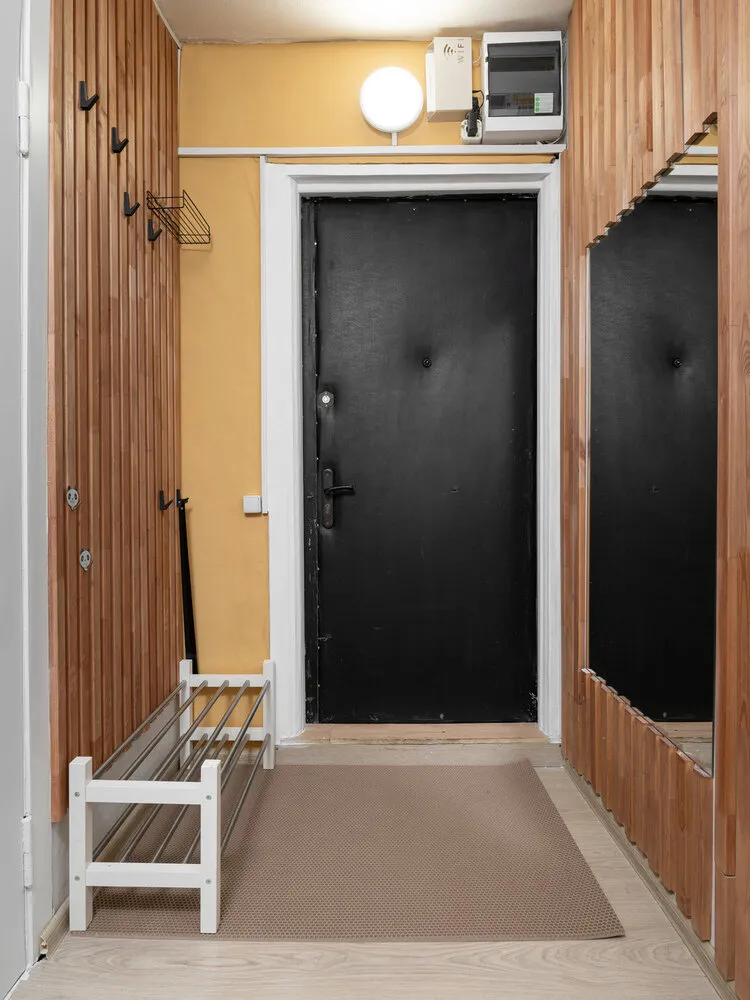 Mistake #2: Wear marks from furniture on walls
Mistake #2: Wear marks from furniture on wallsProblem: At the kitchen table, chairs rubbed against the bottom edge of the wallpaper and left wear marks. After a few months of use, the wall looked untidy.
Why it happens:
- Furniture stands tight against the walls;
- Wallpapers chosen unsuitable for active use;
- Protection of walls at contact points with furniture was not provided;
- Incorrect furniture arrangement.
How Roman fixed it: He installed decorative panels at the height of chair backs. It looked beautiful and practical — the panels protect walls and create an interesting visual effect.
Preventive measures:
- Leave a gap of 3-5 cm between furniture and walls;
- Use washable wallpapers or paint in active areas;
- Hang protective film at contact points;
- Choose furniture with soft pads.
Ways to fix it:
- Decorative panels at the required height;
- Painting the damaged area;
- Installing wall moldings;
- Re-pasting wallpapers with protection of problematic areas.

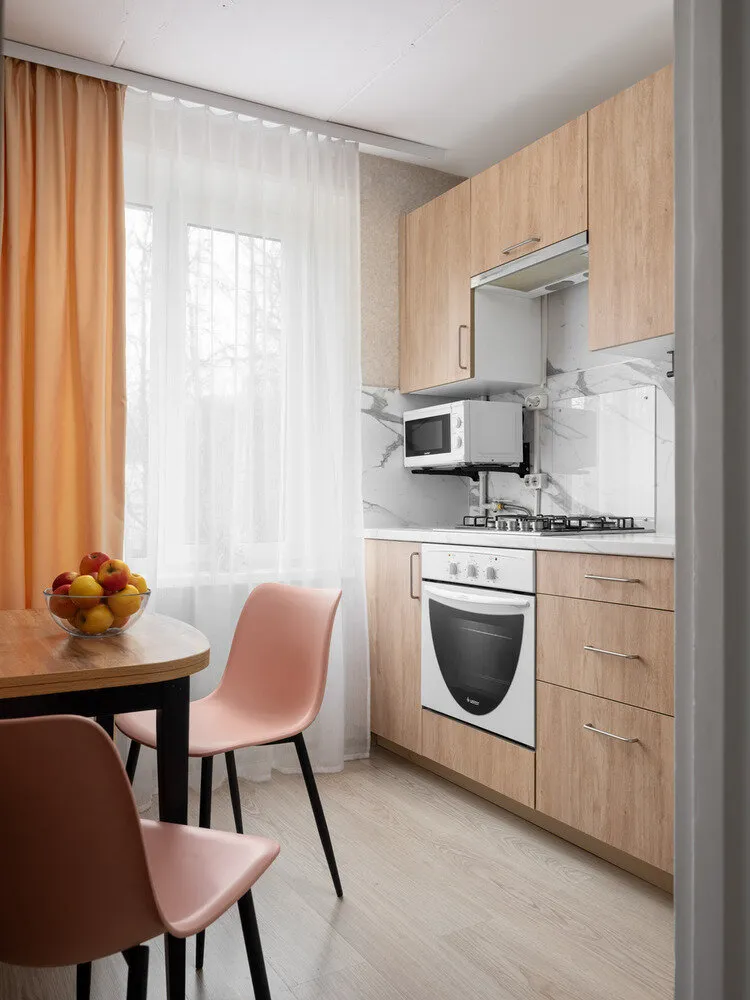 Mistake #3: Uneven floor under laminate
Mistake #3: Uneven floor under laminateProblem: The floor in a Khrushchyovka turned out to be "as uneven as possible," as Roman said. Height differences, irregularities, old coating — a typical situation for 1960s houses.
Why it happens:
- Over 60 years of use, floors settled and deformed;
- The old screed cracked and crumbled;
- Improperly laid joists settled;
- Leaks disrupted the foundation structure.
How Roman solved it: Instead of an expensive screed, he used plywood leveling. First, he laid the plywood, then insulation, and finally the laminate. A budget solution that works perfectly.
Alternative leveling methods:
- Self-leveling mixes for small height differences;
- Dry screed using keramzite;
- Adjustable joists;
- OSB or plywood sheets instead of plywood.
When a full screed is needed:
- Height differences over 3-4 cm;
- Serious damage to the foundation;
- Plans for installing a heated floor;
- Requirements for perfectly flat surface.
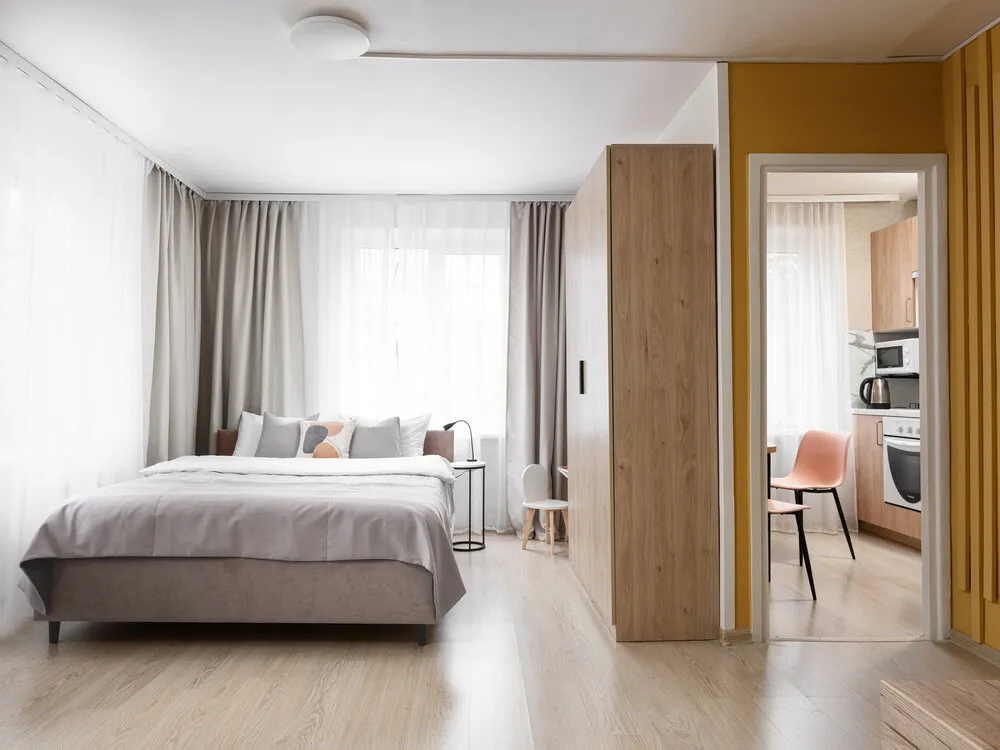 Mistake #4: Old wiring and safety
Mistake #4: Old wiring and safetyProblem: The electrical system in a Khrushchyovka from 1964 was in a state, to say the least, not meeting modern requirements.
Why it's critical:
- Aluminum wiring 60 years old;
- Lack of grounding;
- Small cross-section of wires for modern loads;
- Old outlets and switches without protection.
What Roman did: "I'm afraid of electricity," he honestly admitted and called an electrician. He spent 25 thousand rubles on a full replacement of the wiring. The money is significant, but safety is more expensive.
What you can't save on:
- Replacing wiring in a Khrushchyovka is mandatory;
- Installing RCDs and protective switches;
- Grounding (if possible);
- Sufficient number of outlets.
What you can do yourself:
- Marking for outlets and switches;
- Wall grooving (carefully);
- Installing outlet boxes;
- Finishing work after electrical installation.
Problem: Old steel pipes in Khrushchyovkas often are on the verge of bursting. A leak can happen at any moment and ruin the entire renovation.
Signs of problems:
- Rust on pipes and connections;
- Weak water pressure;
- Unusual sounds in pipes;
- Signs of old leaks.
Roman's solution: Full replacement with plastic pipes and water meters. An investment in peace of mind and avoiding future problems.
Modern solutions:
- Polypropylene pipes — reliable and cheap;
- Metal-plastic — easier to install;
- Copper pipes — expensive but long-lasting;
- Flexible connections for complex sections.
What to check carefully:
- Condition of risers (if possible to replace);
- Shut-off valves;
- Hidden pipe sections;
- Connections and transitions.

 Mistake #6: Incorrect sequence of work
Mistake #6: Incorrect sequence of workProblem: Many do repairs chaotically — they paste wallpapers, change floors, run electrical wiring. The result is rework and additional costs.
Proper sequence for Khrushchyovka:
- Demolition of old coverings and structures;
- Electrical work — wiring, installing outlet boxes;
- Plumbing — replacing pipes, wiring;
- Leveling walls and ceilings;
- Screed or floor leveling;
- Priming all surfaces;
- Painting ceilings;
- Pasting wallpapers;
- Laying floor covering;
- Installing plumbing fixtures and furniture.
Why sequence matters:
- Dirty work doesn't spoil clean;
- No need to redo already completed work;
- Saving time and materials;
- Better final result.
Problem: Many paste wallpapers on unprepared walls, paint over old paint, lay coverings on uneven substrates.
What it leads to:
- Wallpapers peeling off;
- Paint applying unevenly;
- Floor coverings wear out quickly;
- Cracks and defects appear.
Proper wall preparation:
- Complete removal of old coatings;
- Sealing cracks and dents;
- Priming in several layers;
- Spackling if necessary.
Floor preparation:
- Removing old coating;
- Checking and repairing the base;
- Leveling height differences;
- Priming before laying.
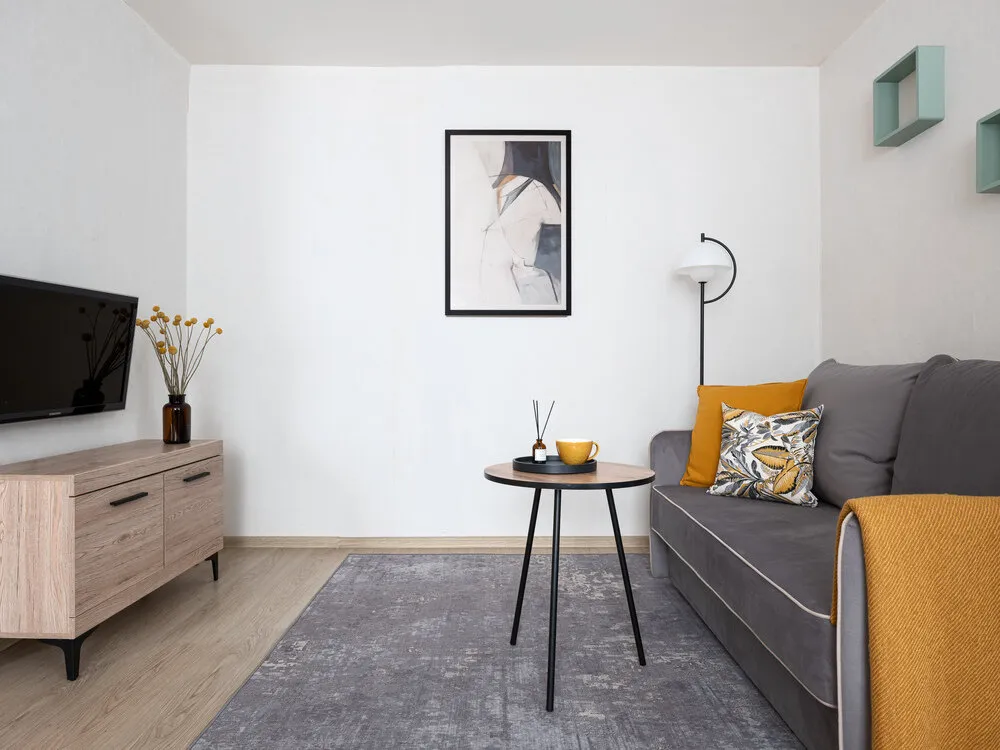

 Mistake #8: Incorrect material choice for Khrushchyovka
Mistake #8: Incorrect material choice for KhrushchyovkaProblem: Materials suitable for new construction may not suit an old foundation due to specific usage conditions.
Features of Khrushchyovkas:
- Possible structural movements;
- Temperature and humidity fluctuations;
- Non-ideal room geometry;
- Limited ceiling height.
Roman's successful choices:
- Budget laminate turned out to be more practical than expensive;
- OSB furniture has served for 3 years without problems;
- Simplistic ceiling whitewash instead of suspended ceilings;
- Plastic pipes instead of metal.
Materials to avoid:
- Heavy ceramic tile on walls;
- Gypsum board structures without accounting for movement;
- Expensive coverings in apartments marked for demolition;
- Materials requiring perfect geometry.
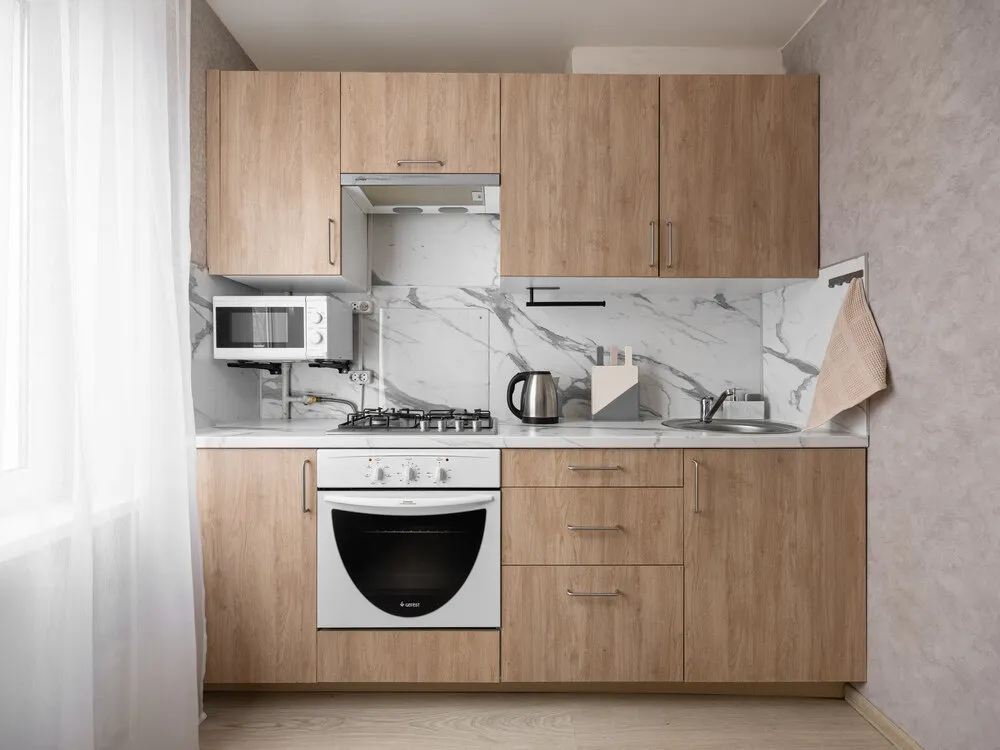 How to turn flaws into strengths
How to turn flaws into strengths- Crooked walls — a reason for decoration: nerovities can be played with decorative panels, strips, or stone. It will look more interesting than just straight walls.
- Low ceilings — accent on the horizontal: gorizontal stripes, wide cornices, low furniture visually expand space.
- Small rooms — a reason for coziness: that which looks cramped in a large apartment creates an atmosphere of comfort and intimacy in Khrushchyovka.
- Old elements — vintage charm: chugun radiators, wooden frames, high skirting boards can become a unique feature of the interior.
- Protecting corners and edges: in narrow corridors of Khrushchyovkas, it's easy to damage corners. Protect them with plastic or metal corner guards.
- Enhanced ventilation: in old buildings, ventilation problems are common. Plan additional exhaust fans in the bathroom and kitchen.
- Noise insulation: thin walls of Khrushchyovkas require additional sound insulation, especially in bedrooms.
- Waterproofing: only necessary in the bathroom and kitchen. Better to overprepare than flood neighbors.
- Electrical work — always if you're unsure of your knowledge;
- Plumbing — for serious renovations;
- Gas equipment — only specialists;
- Load-bearing structures — any work requires approval.
What you can do yourself:
- Pasting wallpapers and painting;
- Laying laminate and linoleum;
- Installing furniture;
- Decorative work.
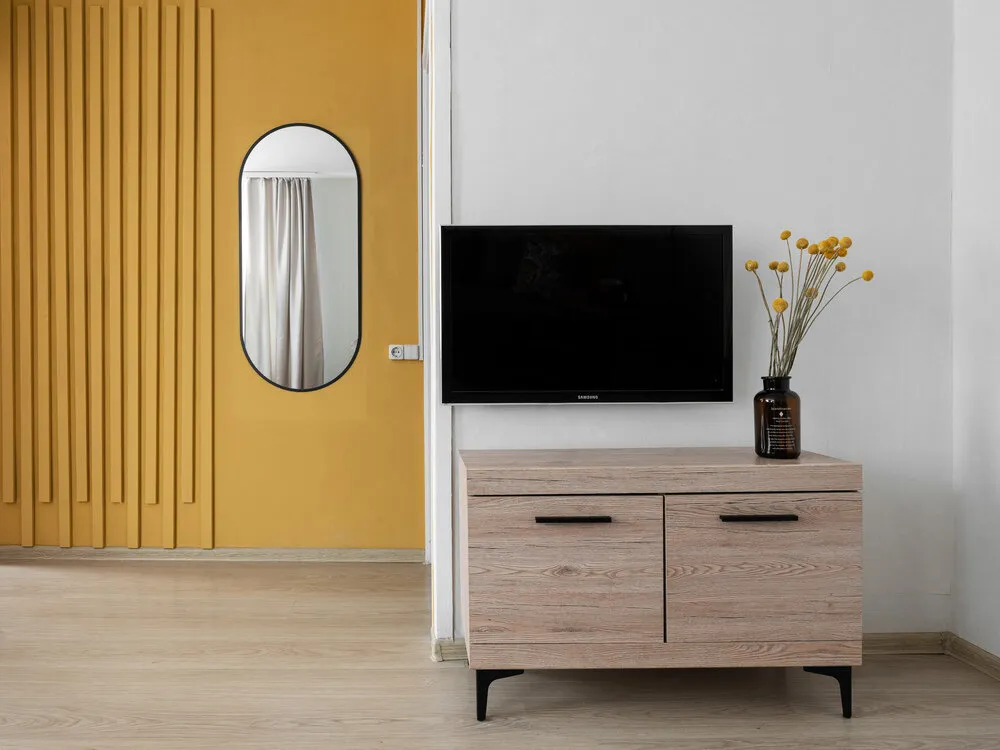 Budget for fixing mistakes
Budget for fixing mistakes It's interesting that many of "fixes" in Roman's project cost just a few rubles:
- Wooden strips to mask spots — 1000 rubles;
- Decorative panels in the kitchen — 3000 rubles;
- Painting part of the wall — 500 rubles;
- Additional light fixtures — 2000 rubles.
Creativity often matters more than big money. The key is not to panic when problems arise, but to find elegant solutions.
Repairing a Khrushchyovka is always an adventure with detective elements. You never know what you'll discover under old wallpapers or behind radiators. But it is precisely this unpredictability that makes the process interesting.
The key is to perceive problems not as catastrophes, but as opportunities for creativity. Many of the most stylish interiors were born from the need to hide flaws or fix mistakes. The experience gained during Khrushchyovka repair will come in handy in any other apartment.
More articles:
 House in the Suburbs Designed by an Interior Designer for Herself and Her Family
House in the Suburbs Designed by an Interior Designer for Herself and Her Family Stylish and Thoughtfully Designed Kitchen in a 65 sqm Loft
Stylish and Thoughtfully Designed Kitchen in a 65 sqm Loft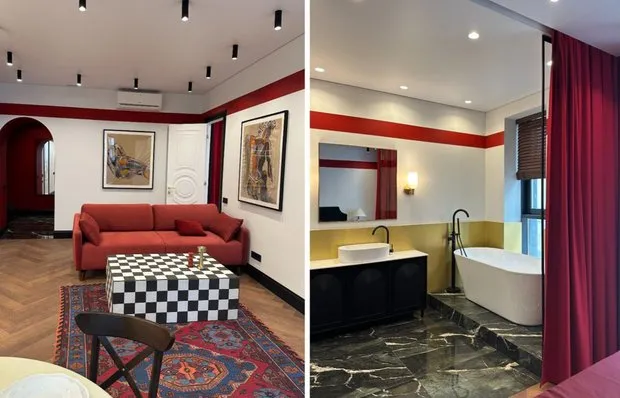 Bold and Unconventional Solutions in a Vibrant 80 m² Trash Style
Bold and Unconventional Solutions in a Vibrant 80 m² Trash Style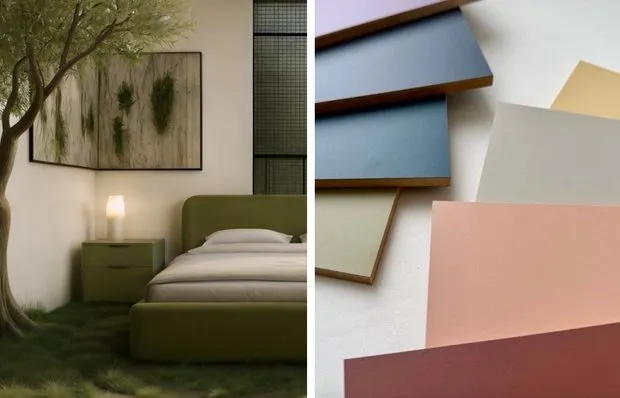 When Interior Starts with Color: How to Choose a Palette You Won't Get Tired Of
When Interior Starts with Color: How to Choose a Palette You Won't Get Tired Of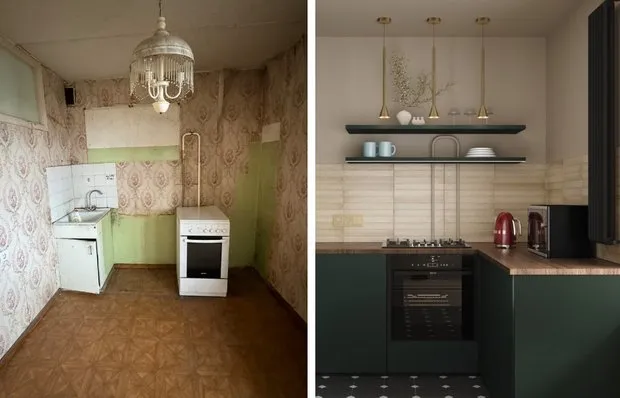 How We Redesigned an 8 m² Kitchen in a Brezhnev-Era Apartment to Make It Bigger and More Modern (Before and After)
How We Redesigned an 8 m² Kitchen in a Brezhnev-Era Apartment to Make It Bigger and More Modern (Before and After)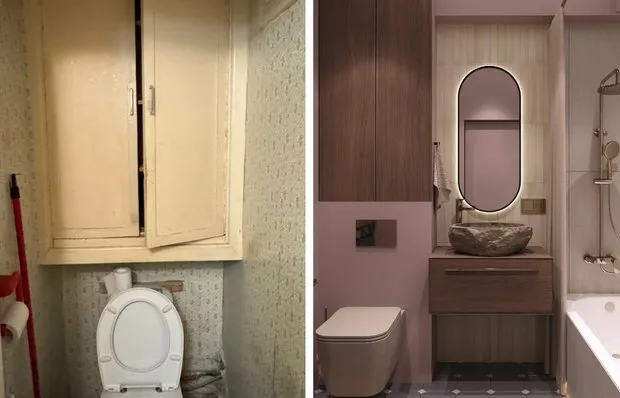 Before and After: How a 3 sqm Bathroom Was Transformed Into a Relaxation Zone
Before and After: How a 3 sqm Bathroom Was Transformed Into a Relaxation Zone How to Style an 8 m² Entrance Hall in a Secondary Apartment to Make It Functional and Stylish
How to Style an 8 m² Entrance Hall in a Secondary Apartment to Make It Functional and Stylish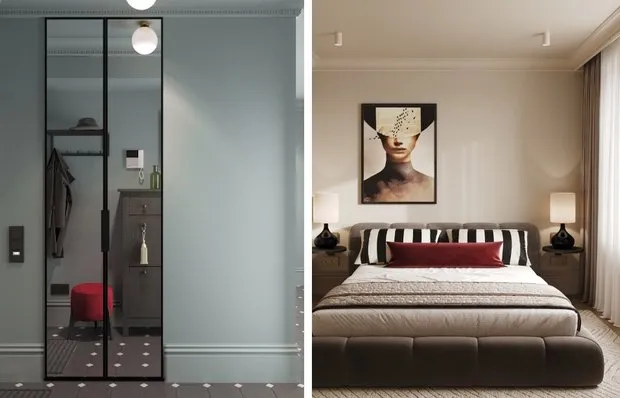 Repair in a Standard Two-Room Apartment: 5 Tips from a Transformed Brezhnev-era Flat Worth Noting
Repair in a Standard Two-Room Apartment: 5 Tips from a Transformed Brezhnev-era Flat Worth Noting